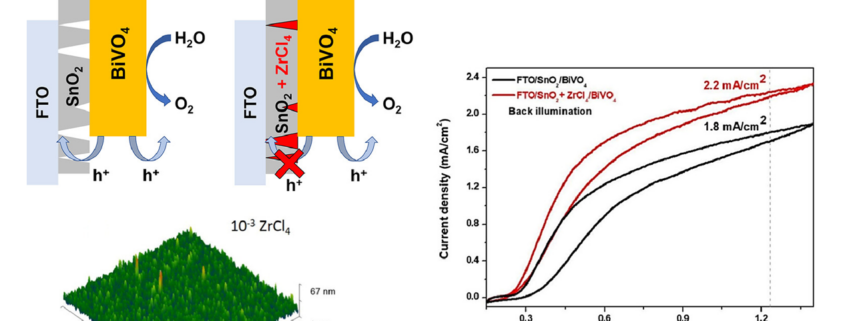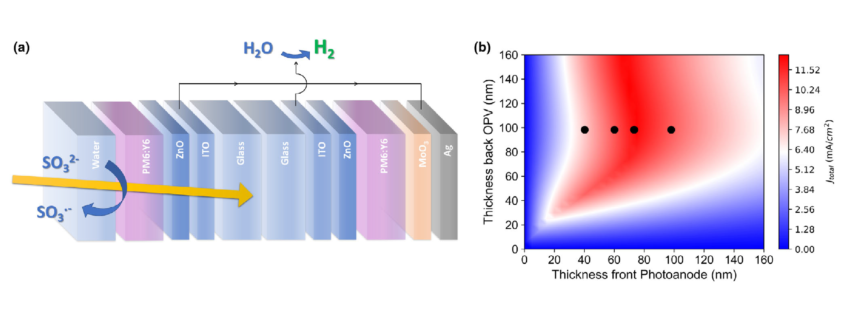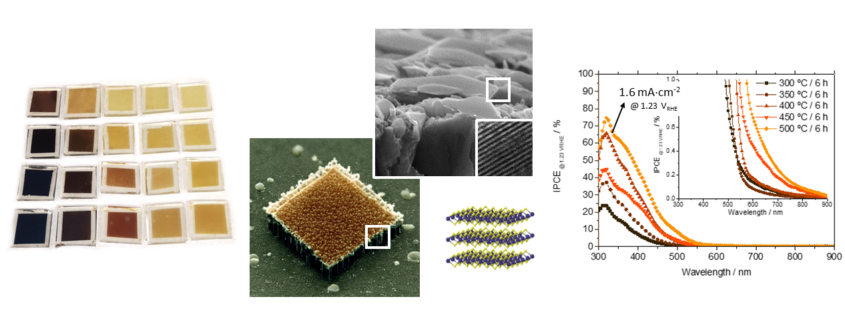Enhancing charge extraction in BiVO4 photoanodes by ZrCl4 treatment of SnO2 hole-blocking layers
Valentina Gacha, Carles Ros, Xènia Garcia, Jordi Llorca, Jordi Martorell, Dimitrios Raptis (2024), Enhancing charge extraction in BiVO4 photoanodes by ZrCl4 treatment of SnO2 hole-blocking layers. Energy Environ. Mater. e12809. https://doi.org/10.1016/j.apmt.2024.102415
Abstract
In the search for more efficient and sustainable photoelectrochemical devices, BiVO4 is nowadays one of the best-performing photoanode material, with favourable band structure for water oxidation. However, BiVO4 photoanodes face challenges such as poor charge transport and slow kinetics. To address these issues, SnO2 films are commonly used as hole blocking layers, reducing recombination rate and enhancing charge lifespan and overall productivity. Yet, this method encounters problems like high defect concentrations at the SnO2/BiVO4 interface and pinholes in the SnO2 layer, which lead to charge recombination. In this study, we explore a ZrCl4 treatment to improve the effectiveness of SnO2 as a hole-blocking layer in BiVO4 photoanodes. Our findings, supported by detailed optoelectronic characterization and continuous and modulated electrochemical analysis, reveal that ZrCl4 treatment significantly enhances the hole-blocking properties of SnO2. This treatment results in a 37 % increase in photocurrent density at 1.23 VRHE and a 40 mV shift in the onset voltage, demonstrating a substantial improvement in overall photoanode efficiency..
Read the original article







